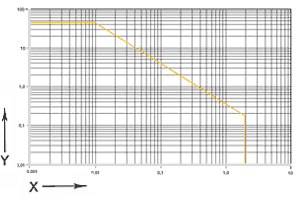iglidur® J3 - material data
| General features | Unit | iglidur® J3 | test method |
| Density | g/cm³ | 1,42 | |
| Colour | yellow | ||
| Max. humidity absorption at 23°C/50% R. H. | % weight | 0,3 | DIN 53495 |
| Max. water absorption | % weight | 1,3 | |
| Coefficient of surface friction, dynamic, against steel | µ | 0,06 - 0,20 | |
| PV values max. (dry) | MPa x m/s | 0,5 | |
Mechanical properties |
|||
| Bending E-module | MPa | 2.700 | DIN 53457 |
| Tensile strength at +20 °C | MPa | 70 | DIN 53452 |
| compressive strength | MPa | 60 | |
| Maximum recommended surface pressure (20° C) | MPa | 45 | |
| Shore D hardness | 73 | DIN 53505 | |
Physical and thermal properties |
|||
| Max. long term application temperature | °C | +90 | |
| Max. short term application temperature | °C | +120 | |
| Lower application temperature | °C | -50 | |
| Heat conductivity | W/m x K | 0,25 | ASTM C 177 |
| Coefficient of thermal expansion (at 23° C) | K-1 x 10-5 | 13 | DIN 53752 |
Electrical properties |
|||
| Specific forward resistance | Ωcm | > 1012 | DIN IEC 93 |
| Surface resistance | Ω | > 1012 | DIN 53482 |
With respect to its general mechanical and thermal specifications, iglidur® J3 is directly comparable to our classic, iglidur® J.
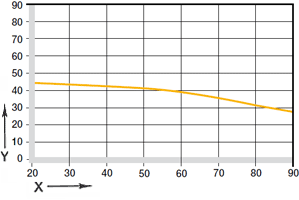
Figure 02: Maximum recommended surface pressure dependent on the temperature (45 MPa to +20 °C)
X = Temperature [°C]
Y = Load [MPa]
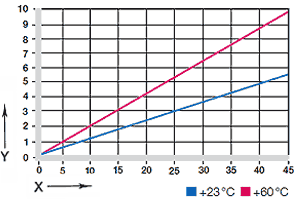
Figure 03: Deformation under load and temperatures
X = Load [MPa]
Y = Deformatio [%]
Maximum recommended surface pressure represents a mechanical material parameter. Tribological conclusions cannot be drawn from it. The compressive strength of iglidur® J3 bearings decreases with increasing temperatures. Fig. 02 clarifies this connection.
Figure 03 shows the elastic deformation of iglidur® J3 with radial loads. Under the maximum recommended surface pressure of 45 MPa, the deformation amounts to less than 6%. A potential plastic deformation depends, among other things, on the length of exposure.
| m/s | Rotary | oscillating | Linear |
| Constant | 1,5 | 1,1 | 8 |
| Short-term | 3 | 2,1 | 10 |
iglidur® J3 is also suitable for medium to high speeds; the limit values indicated in Table 02 can be achieved only at very low pressure loads. At the specified speeds, an increase in temperature up to the long-term permitted value can occur due to friction. In practice these limit values are not always reached.
| iglidur® J3 | Application temperature |
| Lower | -50°C |
| Upper, long-term | +90 °C |
| Upper, short-term | +120 °C |
| Secure axially in addition | +60 °C |
The temperatures prevailing in the bearing system also have an influence on the bearing wear. The wear increases with rising temperatures, and the influence is especially marked from 90°C temperature onwards. An additional securing is recommended at temperatures higher than +60°C.
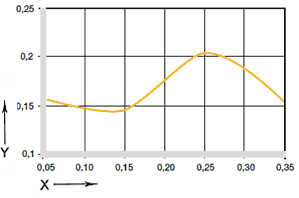
Figure 04: Coefficients of friction dependent on the surface speed, p = 0,75 MPa
X = Sliding speed [m/s]
Y = Coefficient of friction μ
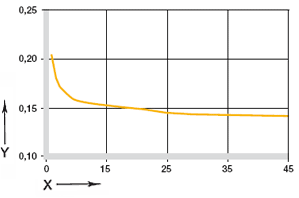
Figure 05: Coefficients of friction dependent on the load, v = 0.01 m/s
X = Load [MPa]
Y = Coefficient of friction μ
Just like the wear resistance, the coefficient of friction µ also alters with the load (Fig. 04 and 05).
| iglidur® J3 | Dry | Grease | Oil | Water |
| Coefficients of friction μ | 0,08–0,15 | 0,09 | 0,04 | 0,04 |
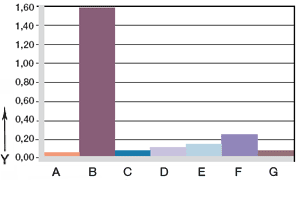
Figure 06: Wear, rotating application with different shaft materials, p = 1 MPa, v = 0,3 m/s
Y = wear [μm/km]
A = Aluminum, hard-anodized
B = machining steel
C = Cf53
D = Cf53, hard chrome-plated
E = St37
F = V2A
G = X90
Friction and wear also depend to a high degree on the shaft material. Very smooth shafts increase the coefficient of both friction and wear. A smoothed surface with an average surface finish Ra = 0,1–0,3 µm is best suited for iglidur® J3. It can be seen from Fig. 06 that iglidur® J3 can be combined with numerous different shaft materials. In Figure 07, rotating and pivoting operations are compared. It can be seen that with increasing load, the wear increases strongly with rotation than with pivoting movements.
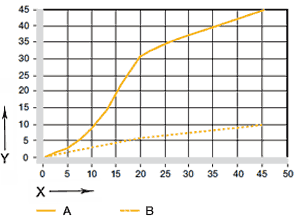
Figure 07: Wear in pivoting and rotating applications with Cf53 dependent on the load
X = Load [MPa]
Y = Wear [μm/km]
A = Rotating
B = Pivoting
| Medium | Resistance |
| Alcohols | + |
| Hydrocarbons | + |
| Greases, oils without additives | + |
| Fuels | + |
| Diluted acids | 0 to - |
| Strong acids | - |
| Diluted bases | + |
| Strong bases | + to 0 |
Electrical properties
| Specific forward resistance | > 1012 Ωcm |
| Surface resistance | > 1012 Ω |
iglidur® J3 bearings are resistant to diluted alkalis and very weak acids as well as to fuels and all kinds of lubricants. The low humidity absorption allows them to be used in wet or humid environment. The bearings made of iglidur® J3 are resistant to many cleaning agents used in the food industry.
Resistant up to a radiation intensity of 1 x 104 Gy
iglidur® J3 bearings change color under the influence of UV rays. However the hardness, compressive strength and the wear resistance of the material do not degrade.
In application in vacuum, the potentially existent moisture content is degassed. For this reason only the dry iglidur® J3 bearings are suitable for vacuum.
Electrically insulating
| Maximum moisture absorption | |
| by +23 °C/50 % r. F. | 0,3 Wt.-% |
| Max. water absorption | 1,3 Wt.-% |
Table 06: Moisture absorption
The humidity absorption of iglidur® 200 bearings amounts to about 0,3% in standard climatic conditions. The saturation limit in water is 1,3 %. These values are so low that a moisture expansion need to be considered only in extreme cases.
| Diameter d1 [mm] |
Shaft h9 [mm] |
iglidur® J3 E10 [mm] |
Housing H7 [mm] |
| Up to 3 | 0 - 0,025 | +0,014 +0,054 | 0 +0,010 |
| > 3 to 6 | 0 - 0,030 | +0,020 +0,068 | 0 +0,012 |
| > 6 to 10 | 0 - 0,036 | +0,025 +0,083 | 0 +0,015 |
| > 10 to 18 | 0 - 0,043 | +0,032 +0,102 | 0 +0,018 |
| > 18 to 30 | 0 - 0,052 | +0,040 +0,124 | 0 +0,021 |
| > 30 to 50 | 0 - 0,062 | +0,050 +0,150 | 0 +0,025 |
| > 50 to 80 | 0 - 0,074 | +0,060 +0,180 | 0 +0,030 |
| > 80 to 120 | 0 - 0,087 | +0,072 +0,212 | 0 +0,035 |
| > 120 to 180 | 0 - 0,100 | +0,085 +0,245 | 0 +0,040 |
Table 07: Important tolerances iaw. ISO 3547-1 after press-fitting.
iglidur® J3 bearings are standard bearings for shafts with h-tolerance (recommended minimum h9). The bearings are designed for press-fit in a housing with h7 tolerance. After the installation in a housing with nominal diameter, the inner diameter of the bearing automatically adjusts to the E10 tolerance. Compared to the installation tolerance, the inner diameter varies according to moisture absorption.
More than 100,000 products available! Delivery and consultation Mon-Fri from 7am-8pm and Sat from 8am-12pm!
